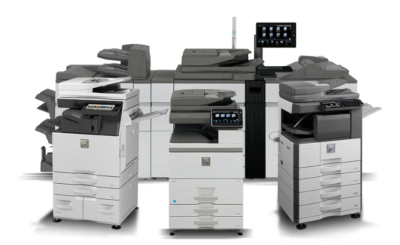When companies start out, some founders consider branding as a luxury that they can forgo, choosing to focus on what they consider essential, like marketing or production.
Often, when a startup fails, the forensic procedure attributes the closure of the business to some other factor, like lack of funding or poor marketing. Rarely will you hear companies shut down due to lackluster branding.
But branding matters, especially in marketing. In fact, failure to give ample attention and effort to branding can negate the efforts you’ve made in other areas of your business. This is particularly true, whether you have recently launched your business or if it has been up and running for quite some time.
Ideally, the process of branding should coincide with all the processes associated with launching a company. Doing so allows your company to have a robust foundation it can build upon later.
Why does branding matter?
Branding is not a luxury that you can easily or even try to avoid. Not in an age where customers can readily access information on the Internet.
But what, exactly, is a brand?
A brand can refer to any feature that distinguishes a seller’s product or service from the competition. Branding, on the other hand, refers to the process where a relationship between the brand and its audience is forged.
The benefits of branding
Done right, branding offers numerous advantages. Here’s a brief look at some of these benefits.
Increased competitiveness
No matter how long your business has been in the industry, having a distinct advantage over the competition puts you in a strong position to succeed.
Differentiation
In a marketplace where similar products are competing for the same customers, branding can be a big difference-maker.
Identification
On store shelves, strong branding allows customers to find and choose your product over your competitors easily.
Personal connection
Successful brands build relationships with customers by earning their trust and connecting with them. And through communication consistency, your customers can become loyal fans.
Transforming your brand
If you haven’t paid much attention to branding in the past, there’s still time to turn things around through brand transformation.
Brand transformation is a process where management and the marketing team work together to translate a company’s mission and vision into something tangible, like brand design.
The process entails undertaking four steps. Here’s a brief look at each of these:
Brand definition
The terms company and brand are often used interchangeably. And to a certain extent, both can refer to essentially the same thing.
However, your company can be viewed as the different teams and processes involved in creating your product or delivering your service. That includes top management, marketing, etc.
Your brand, on the other hand, is a construct, fashioned out of the values and attributes that you think will resonate with your customers. That entails the creation of a brand persona.
But how, exactly, do you define your brand and create its personality?
The best place to start is to look at your company mission and vision. Your brand definition should encapsulate the reason why you started your business in the first place. Next, look back at the goals that you set for your company.
After that, you should determine the type of personality you want your brand to have. The best way to do this is to imagine yourself as your target audience and ask yourself how you see your product or service.
Visual language
The world is fast becoming more visually-oriented, to a large extent, due to the Internet and social media. But what does this mean for your brand?
Imagine yourself walking into a store that is just about to open to the public. You can see all the products, but there is no sense of organization. If the store were to open, the staff would be plagued by customers asking where to find the items they are planning to buy.
The same thing applies to your brand. You would want to provide your audience with what they are looking for, and more importantly, you want them to perform your desired action.
Achieving this task requires a brand identity. Your brand identity starts with your logo, which is complemented by graphic design and other visual elements you put online and offline. These are the foundation of your visual language.
The primary function of the brand logo is to make your brand recognizable in such a way that your audience associates it with your product or service. Brand identity, on the other hand, goes beyond that. Your brand identity is about how you would want your customers to see and experience your brand.
Creating a style guide
It can be hard to create consistency and recognition if your visual language continually changes.
Over time, your company will work with different creatives for online and offline marketing materials. How do you ensure that everything remains consistent? The answer: a style guide.
A style guide or brand bible contains all the rules and guidelines related to the design, composition, and overall look and feel of your brand across different platforms. It serves as a handy guide for your employees, consultants, and vendors.
Evolving your brand
Branding is not something that is done while starting your own company. It is a continuous process. As your company makes the transition from a startup to an industry stalwart, your branding efforts should match the changes your company undergoes while keeping a close eye on the relationships that you have made.
Evolving your brand often entails finding the right balance between retaining your old customers and attracting new ones.
That can mean a few things. For example, you might want to keep tabs on emerging trends that will provide you an insight into how the market is moving. Or you might want to introduce new products or services to match changing consumer needs.
Worth the investment
Investing in branding can be daunting, especially when you consider the sheer volume of work that needs to be done. But all of this will pale in comparison with the final outcome: a strong and successful brand.

Infographic provided by Ansafone Contact Centers, a business process outsourcing services company.









